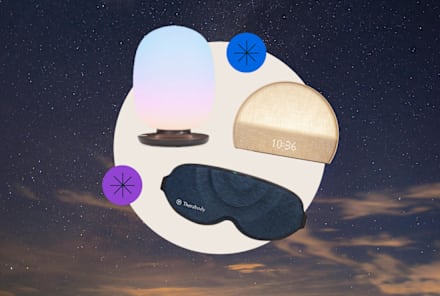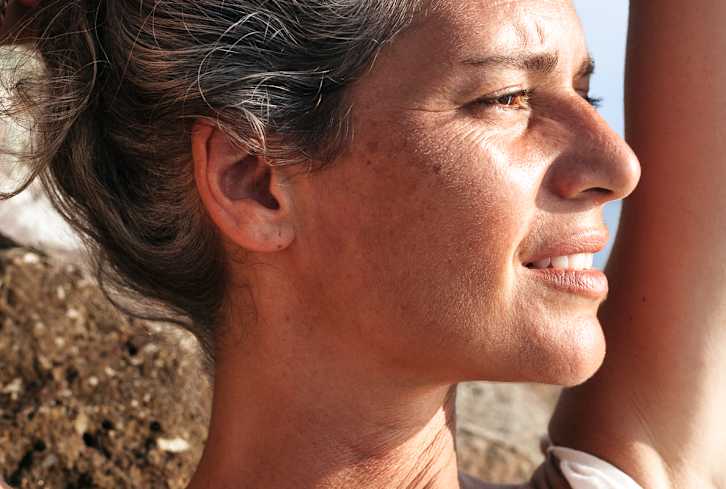Advertisement
Apple Cider Vinegar For Acne: How To Use It, Cautions, Recipe + More


Among the many, many at-home DIY skin care remedies out there, using apple cider vinegar to help clear up acne is perhaps one of the most well known—and controversial. Some on the internet swear by it, others (and many derms) caution it might be too stripping, especially when used undiluted.
But to further sort out fact from fiction about apple cider vinegar and acne, we took a look at the current scientific research and asked experts for their take.
What are the skin clearing benefits of apple cider vinegar?
For some skin types, an at-home apple cider vinegar toner may prove to be successful in exfoliating and staving off acne. For others, though, it might not do the trick—and it will cause irritation if not diluted. For skin care purposes, and many other health-boosting uses (internally and externally, such as on the hair and scalp), unfiltered apple cider vinegar is preferred. This is because unfiltered apple cider vinegar contains what is known as the "mother," or the murky, brown-tinged strands of bacteria and enzymes that are thought to be the source of many of the elixir's benefits. While there haven't been any research studies specifically on apple cider vinegar and acne, ACV does have many research-backed properties that may be responsible for its purported ability to help tame breakouts:
1. It may help balance the skin's pH.
If you've ever sipped or smelled it, you can tell right away that apple cider vinegar is acidic—like, very acidic. On the pH scale of 0 (acidic) to 14 (alkaline), ACV lies between 2 and 3. Healthy skin with a strong and intact barrier is also slightly acidic, with an ideal pH level of 5.5, while compromised skin barriers (including those with skin issues such as eczema and rosacea) typically have a higher, more alkaline pH level. So, it stands to reason, then, that using apple cider vinegar on the skin could help to restore its natural, slightly acidic pH levels—but some dermatologists, and research studies1, don't support this. "It's been reported that the lower pH of ACV may help rebalance the skin pH and improve skin barrier function in conditions like atopic dermatitis, where the pH is more alkaline," explains holistic board-certified dermatologist Keira Barr, M.D. "However, [some] studies don't support it."
2. Acts as a chemical exfoliant.
Apple cider vinegar is also quite an efficient chemical exfoliant. It's naturally chock-full of alpha-hydroxy acids (AHAs), including some of the same compounds that are formulated into our favorite toners and facial peels to help slough off dead skin. Specifically, ACV contains "alpha-hydroxy acids like lactic, citric, and malic acids," Barr says. When applied topically, these acids work to "exfoliate the uppermost layers of the skin, revealing skin that appears smoother and more hydrated." As we know, using chemical exfoliants regularly over time can also help even out and smooth skin tone, potentially minimizing the appearance of acne scars. However, while this may be true anecdotally and in theory, Barr points out that currently, there isn't good scientific data to support ACV's acne-scar-fading abilities.
3. It has antifungal and antibacterial properties.
Exfoliation aside, though, these natural AHAs are still multipurpose; in addition to exfoliation, acetic acid also "has antifungal and antibacterial properties that may help kill the bacteria that causes acne," Barr explains. Research has also confirmed that citric acid2 and lactic acid3 can both kill Cutibacterium acnes (formerly known as Propionibacterium acnes, or P. acnes), a type of bacteria on the skin that has been shown to contribute to the development of acne.
How to make an apple cider vinegar toner: DIY Recipe
1. Mix your apple cider vinegar with water.
Apple cider vinegar must be diluted when used as a DIY toner. Because it is so acidic, "if not diluted properly, ACV can give you superficial chemical burns4 and skin irritation," explains board-certified dermatologist Dhaval Bhanusali, M.D.
Use one-part vinegar to three or four parts water (for sensitive skin types, even more water). Additionally, "before using it on your face for the first time, it's a good idea to try a test spot on your skin to make sure you won't have an adverse reaction," Barr says.
- Severe acne: 1-part apple cider vinegar to 3-parts water
- Moderate acne: 1-part apple cider vinegar to 4-parts water
- Sensitive skin: 1-part apple cider vinegar to 5-parts water
And because this home-made toner won't have the same stabilizers or preservatives as your store-bought options, you'll need to make it fresh before use. Try mixing each single-use dose in a shot glass—that way you won't waste ACV.
2. Apply to skin as tolerated.
To use this diluted apple cider vinegar and water mixture as a toner, apply it with a cotton ball or reusable cloth pads onto clean skin. Start low and slow; apply a small amount of the toner to skin for just a few minutes before rinsing off. If it's well tolerated, Barr says you can increase the amount of toner used, or the length of time you leave it on the skin—but never leave ACV on your skin for longer than 15 minutes. After rinsing off completely, apply a moisturizer. Barr recommends using ACV toner one to three times per week, as tolerated.
3. Consider using it as a spot treatment.
If it's only a few areas you want to target—say your chin, T-zone, or even one zit in particular—you might not need to treat the entire face with the toner. When used as a spot treatment, the same rules apply, just narrow your application areas. This will help dry out individual blemishes without having to treat the whole face.
Who shouldn't use it:
For those with naturally dry skin, using an apple cider vinegar toner may prove to be overly drying. If you have an open wound, including pimples or pustules that have come to a head (or been popped), applying apple cider vinegar topically might also sting. If you have highly sensitive or very acne-prone skin your skin barrier is generally compromised, so it's always wise to consult a dermatologist before applying any DIY mixtures onto your complexion, ACV or otherwise. "Especially for people with very sensitive skin, applying ACV directly to the skin can be very damaging," Barr explains. "When applied at full concentration on the skin, there is a risk of causing redness, irritation, and severe chemical burns."
The bottom line:
In sum, research has shown that the acidic compounds (including powerful alpha-hydroxy acids) in apple cider vinegar work to both exfoliate the skin's surface and kill acne-causing bacteria. Other touted benefits of apple cider vinegar, including its ability to fade acne scars and balance a compromised skin barrier, are more controversial. However, you'll hear plenty of first-person anecdotes singing its praise. Just be mindful of how you use it.
Watch Next
Enjoy some of our favorite clips from classes
Enjoy some of our favorite clips from classes
What Is Meditation?
Mindfulness/Spirituality | Light Watkins
Box Breathing
Mindfulness/Spirituality | Gwen Dittmar
What Breathwork Can Address
Mindfulness/Spirituality | Gwen Dittmar
The 8 Limbs of Yoga - What is Asana?
Yoga | Caley Alyssa
Two Standing Postures to Open Up Tight Hips
Yoga | Caley Alyssa
How Plants Can Optimize Athletic Performance
Nutrition | Rich Roll
What to Eat Before a Workout
Nutrition | Rich Roll
How Ayurveda Helps Us Navigate Modern Life
Nutrition | Sahara Rose
Messages About Love & Relationships
Love & Relationships | Esther Perel
Love Languages
Love & Relationships | Esther Perel


















